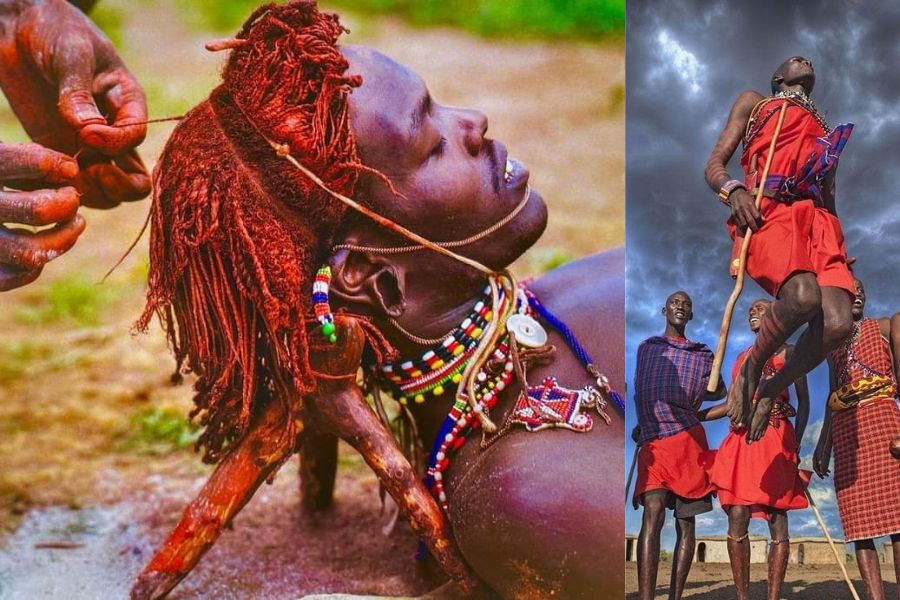
Outline: Cultural Safari in Kenya – Top Destinations to Explore People and Nature
What Is a Cultural Safari? Understanding the Concept
Top Cultural Safari Destinations and Communities in Kenya
Top National Parks, Reserves, and Conservancies for Cultural Encounters
Top Cultural Safari Itineraries & Packages by Tribe
Wildlife Meets Culture: Unique Experiences You Can’t Miss
Responsible Travel Tips for Cultural Safaris
FAQs About Cultural Safaris in Kenya
▪️ Safety, food, photography, what to pack, and more
Conclusion: Why a Cultural Safari in Kenya Is a Journey of Connection
Introduction: Discover Kenya’s Soul Through a Cultural Safari
1. What Is a Cultural Safari? Understanding the Concept
How It Differs from a Typical Safari
Why Cultural Safaris Are Gaining Popularity
Types of Cultural Interactions You Might Experience
2. Top Cultural Safari Destinations and Communities in Kenya
1. Maasai – Maasai Mara & Loita Hills
Cultural Highlights:
2. Samburu – Samburu National Reserve
Cultural Highlights:
3. Kikuyu – Mount Kenya & Central Highlands
Cultural Highlights:
4. Turkana – Lake Turkana Basin
Cultural Highlights:
5. Swahili – Coastal Kenya (Lamu & Mombasa)
Cultural Highlights:
3. Top National Parks, Reserves, and Conservancies for Cultural Encounters
1. Maasai Mara National Reserve
Best for: Wildlife viewing & Maasai culture
2. Samburu National Reserve
3. Amboseli National Park
4. Mount Kenya National Park
5. Ol Pejeta Conservancy
Best for: Conservation + community impact
6. Lake Turkana National Park
7. Coastal Heritage Sites (Lamu & Gede Ruins)
4. Top Cultural Safari Itineraries & Packages by Tribe
A) Maasai Cultural Safari – 4 Days in Maasai Mara & Loita Hills
Highlights:
Itinerary Snapshot:
Includes: Transport, park fees, accommodation (2 nights homestay, 1 night lodge), local guide, cultural activities, meals
Excludes: Flights to Nairobi, personal items, alcohol, tips
B) Samburu Warrior Safari – 3 Days in Samburu National Reserve
Highlights:
Itinerary Snapshot:
Includes: Full-board lodging, safari drives, community activities, guide
Excludes: Domestic flight (optional), souvenirs, tips
C) Kikuyu Cultural Highland Tour – 3 Days in Central Kenya
Highlights:
Itinerary Snapshot:
Includes: Homestay lodging, all meals, transport, guides, cultural activities
Excludes: Mount Kenya park fees (optional), alcohol, and personal expenses
D) Turkana Desert Culture & Lake Safari – 5 Days at Lake Turkana
Itinerary Snapshot:
Includes: Lodging, domestic flight, boat ride, guide, meals, cultural tours
Excludes: Park fees for Central Island, tips, souvenirs
E) Swahili Coastal Cultural Tour – 4 Days in Lamu or Mombasa
Highlights:
Itinerary Snapshot:
Includes: Domestic flight, accommodation, cultural activities, dhow trip, meals
Excludes: Entry fees to ruins, personal items, and tips
5. Wildlife Meets Culture: Unique Experiences You Can’t Miss
Morning Safari, Evening Ceremony (Maasai Mara)
Camel Trekking with Samburu Warriors
Traditional Cooking After a Nature Walk (Kikuyu Highlands)
Fish and Forage in Turkana
Dhow Sailing and Swahili Song (Lamu)
Stay in a Community Conservancy (Ol Pejeta, Kalama, or Il Ngwesi)
6. Responsible Travel Tips for Cultural Safaris in Kenya
1. Respect Cultural Protocols
2. Learn a Few Words in the Local Language
3. Support Local Economies
4. Tread Lightly on the Environment
5. Research Before You Go
6. Choose Ethical Tour Operators
7. FAQs About Cultural Safaris in Kenya
1. Is it safe to visit local villages in Kenya?
2. What should I wear during cultural visits?
3. Can I bring gifts for the communities I visit?
4. Are cultural safaris suitable for families with kids?
5. How can I make sure my visit benefits the local community?
6. Will I be able to communicate with locals?
7. Are these safaris available year-round?
8. Conclusion: Why a Cultural Safari in Kenya Is the Journey of a Lifetime
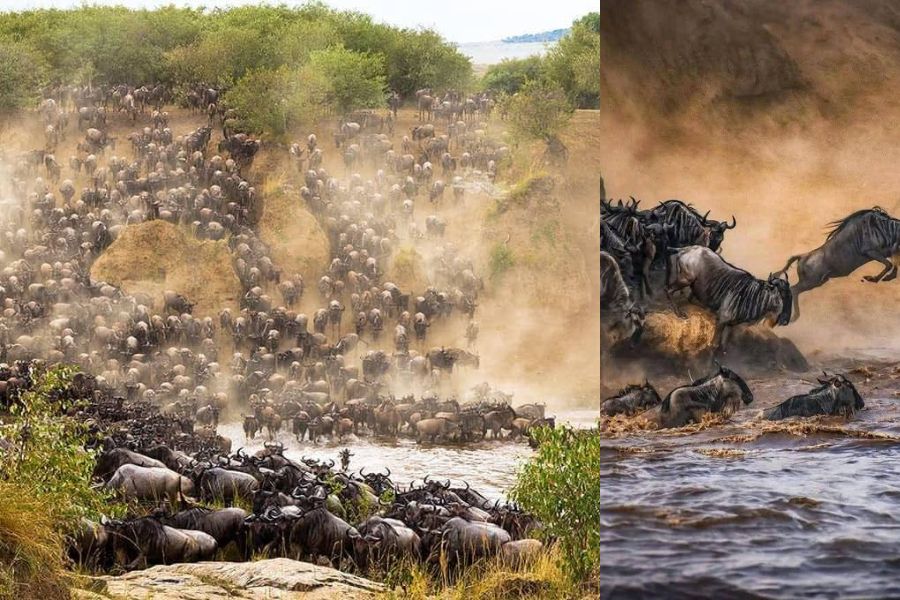
Planning your first Kenyan adventure? This comprehensive guide provides up-to-date, officially verified information for visiting Kenya's three premier destinations in June 2025. Perfect for first-time visitors, safari enthusiasts, and families seeking authentic African experiences.
Why June 2025 is Perfect for Your Kenya Adventure
June represents the sweet spot for Kenyan travel, marking the beginning of the coveted dry season when wildlife congregates around water sources, making for spectacular game viewing. The month coincides with the early stages of the Great Migration, where over 1.5 million wildebeest begin their dramatic river crossings from Tanzania's Serengeti into Kenya's Masai Mara.
Key June Advantages:
- Optimal wildlife viewing with minimal vegetation obstruction
- Comfortable temperatures across all three destinations
- Reduced rainfall creates excellent road conditions
- Clear skies are perfect for photography and outdoor activities
- Start of the migration season in Masai Mara
Essential Documentation: Getting Your Entry Right
Electronic Travel Authorization (eTA) - Mandatory for All Visitors
Critical Update: Since January 5, 2024, Kenya requires all international visitors to obtain an Electronic Travel Authorization (eTA) before arrival, replacing the previous visa system.
Official Requirements (Verified with U.S. State Department):
- Valid Passport: Minimum 6 months validity from entry date
- Blank Pages: At least 2 blank passport pages required
- eTA Application: Must be completed online at etakenya.go.ke
- Processing Fee: $30 USD (non-refundable)
- Processing Time: 1-3 business days (apply minimum 7 days before travel)
- Validity: 90 days from approval date
Application Process:
- Visit the official eTA portal at etakenya.go.ke
- Complete online application with personal and travel details
- Upload passport photo page and travel itinerary
- Pay $30 USD fee via credit/debit card (Visa/MasterCard accepted)
- Receive eTA approval via email within 1-3 business days
Health Documentation Requirements
Yellow Fever Certificate:
- Mandatory if arriving from yellow fever endemic countries
- Not required for direct travel from the United States
- The certificate must be valid (not expired)
COVID-19 Requirements:
- Check current requirements before travel, as they may change
- Visit the U.S. Embassy in Kenya website for the latest updates
Health Preparations: Staying Safe and Healthy
CDC-Recommended Vaccinations (Current 2025 Guidelines)
Required Vaccinations:
- Yellow Fever (if arriving from endemic areas)
Highly Recommended Vaccinations:
- Hepatitis A and B
- Typhoid
- Routine vaccinations (MMR, DPT, influenza)
- Meningitis (especially for June travel during dry season)
Consider for Extended Stays:
- Rabies (pre-exposure prophylaxis)
- Japanese Encephalitis (certain areas)
Malaria Prevention: Your Complete Protection Strategy
Official CDC Recommendations for Kenya (2025):
Kenya is classified as a high-risk malaria area except for Nairobi's central urban areas. The CDC recommends prescription antimalarial medication for all three destinations covered in this guide.
Proposed Antimalarial Medications: Optional - thus opt for your choice
1. Atovaquone-Proguanil (Malarone)
- Dosing: Start 1-2 days before travel, daily during stay, continue 7 days after return
- Adult dose: 1 adult tablet daily
- Advantages: Short duration after travel, few side effects
2. Doxycycline
- Dosing: Start 1-2 days before travel, daily during stay, continue 4 weeks after return
- Adult dose: 100mg daily
- Advantages: Inexpensive, widely available
- Considerations: Longer post-travel duration, photosensitivity
3. Mefloquine (Lariam)
- Dosing: Start 1-3 weeks before travel, weekly during stay, continue 4 weeks after return
- Adult dose: 250mg weekly
- Considerations: Potential neuropsychiatric side effects
Consult your healthcare provider 4-6 weeks before travel to determine the best option for your medical history and itinerary.
Climate Deep Dive: June Weather Across Your Destinations
Official Weather Data (Kenya Meteorological Department)
Masai Mara National Reserve
- Season: Early dry season
- Daytime Temperature: 22-25°C (72-77°F)
- Night time Temperature: 10-12°C (50-54°F)
- Rainfall: 8-10 rainy days, typically brief afternoon showers
- Humidity: Low (30-50%)
- Sunrise: 6:30 AM | Sunset: 6:45 PM
Nairobi (1,795m elevation)
- Season: Cool, dry season beginning
- Daytime Temperature: 20-24°C (68-75°F)
- Nighttime Temperature: 10-15°C (50-59°F)
- Rainfall: Minimal, occasional light showers
- Humidity: Moderate (40-60%)
- Air Quality: Generally good during the dry season
Diani Beach (Coast)
- Season: Post-monsoon dry period
- Daytime Temperature: 28-30°C (82-86°F)
- Nighttime Temperature: 20-22°C (68-72°F)
- Ocean Temperature: 26°C (79°F)
- Rainfall: Light occasional showers
- Trade Winds: Consistent cooling effect
- Humidity: High (70-85%)
Clothing Essentials: Dressing for Success
Safari Color Strategy
Recommended Colors for Wildlife Viewing:
- Khaki and beige: Classic safari tones that blend with savanna landscapes
- Olive green and sage: Natural camouflage without alarming wildlife
- Light brown and tan: Professional appearance while maintaining functionality
- Muted grays: Versatile across all three destinations
Colors to Strictly Avoid:
- Bright white: Attracts insects and creates glare for photography
- Black: Absorbs heat and attracts tsetse flies
- Bright colors (red, orange, yellow): May disturb wildlife and attract insects
- Camouflage patterns: Prohibited by some African countries and safari operators
Fabric Technology for Comfort
Optimal Fabric Choices:
Quick-Dry Synthetic Blends (Recommended)
- Polyester-nylon combinations with moisture-wicking properties
- Drying time: 2-4 hours
- Wrinkle-resistant for efficient packing
- Odor-resistant treatments available
Merino Wool Blends
- Natural temperature regulation
- Odor-resistant for multi-day wear
- Soft texture, ideal for sensitive skin
- Perfect for layering systems
Cotton-Synthetic Blends
- Breathable for hot weather conditions
- Durable for frequent washing
- Comfortable for extended wear periods
Destination-Specific Packing Lists
Masai Mara Safari Essentials:
- 4 long-sleeved safari shirts (khaki / olive green)
- 3 short-sleeved breathable tops
- 2 pairs of convertible pants
- 1 pair of knee-length shorts
- 1 warm fleece jacket (essential for early morning game drives)
- 1 lightweight rain jacket
- Wide-brimmed hat with chin strap
- 6-7 sets of moisture-wicking undergarments
- Warm socks for chilly mornings
- Closed-toe hiking boots
- Comfortable sneakers for vehicle game drives
Nairobi Urban Exploration:
- 3 casual long-sleeved shirts
- 3 t-shirts or polo shirts
- 1 pair of dark jeans or dress pants
- 1 pair of casual shorts
- 1 light sweater or cardigan
- Comfortable walking shoes with good support
- Dress shoes for upscale restaurants
- Light jacket for air-conditioned spaces
Diani Beach Relaxation:
- 3-4 swimsuits (rotation for quick drying)
- 4 light cotton or linen shirts
- 3 sundresses or casual beach wear
- Beach cover-ups
- Light shorts and capri pants
- Quality flip-flops (Reef, Havaianas)
- Water shoes for coral reef exploration
- Wide-brimmed sun hat
- Light cardigan for evening, ocean breezes
Insect Protection: Your Defense Arsenal
Understanding Kenya's Insect Environment
June's dry season reduces overall insect activity but doesn't eliminate the malaria risk. Anopheles mosquitoes (malaria carriers) are most active during dawn and dusk periods, making protection crucial during these times.
Top-Rated Insect Repellents (USA Brands)
DEET-Based Repellents (CDC Recommended for Kenya):
Ben's 30% DEET Tick and Insect Repellent
- Protection Duration: 10 hours
- Special Features: Specifically formulated for tropical conditions
- Application: Pump spray for even coverage
- Where to Buy: REI, Amazon, Dick's Sporting Goods
Off! Deep Woods Dry
- DEET Concentration: 25%
- Protection Duration: 8 hours
- Formula: Non-greasy, quick-drying
- Where to Buy: Walmart, CVS, Target, Amazon
Cutter Backwoods Dry
- DEET Concentration: 25%
- Protection Duration: 10 hours
- Application: Aerosol spray
- Where to Buy: Home Depot, Lowe's, Amazon
DEET-Free Alternative:
Sawyer Premium Picaridin Insect Repellent
- Active Ingredient: 20% Picaridin
- Advantages: Odorless, non-greasy, fabric-safe
- Protection Duration: 12 hours against mosquitoes
- Where to Buy: REI, Amazon, outdoor retailers
Physical Protection Strategies
Permethrin-Treated Clothing:
- Pre-treat clothing or purchase pre-treated garments
- Protection lasts through multiple washes
- Available brands: ExOfficio, BugsAway, Craghoppers NosiLife
Environmental Protection:
- Most lodges provide bed nets; bring backup for budget accommodations
- Use air-conditioned rooms when available
- Keep doors and windows closed during dawn / dusk periods
Terrain Navigation: What to Expect
Masai Mara: Savanna Ecosystem
Terrain Characteristics:
- Rolling grasslands: Generally flat with gentle undulations
- Acacia woodlands: Scattered trees provide wildlife shade
- Mara River: Steep banks, rocky crossings during migration
- Seasonal swamps: May be muddy after recent rains
Footwear Strategy:
- Closed-toe hiking boots: Essential for walking safaris
- Comfortable sneakers: Perfect for vehicle-based game drives
- Gaiters: Protection from thorns and dust
Nairobi: Urban Infrastructure
Terrain Variety:
- Paved city streets: Modern infrastructure with traffic congestion
- Nairobi National Park: Savanna within city limits
- Museum and cultural sites: Well-maintained walkways
- Karen/Langata areas: Suburban hills with altitude changes
Transportation:
- Uber/Bolt: Reliable app-based transport
- Pre-arranged transfers: Recommended for airport pickups
- Walking: Feasible in specific areas with proper precautions
Diani Beach: Tropical Coastal Environment
Coastal Features:
- White coral sand beaches: Easy walking, pristine conditions
- Coral reef platforms: Rocky areas exposed at low tide
- Mangrove channels: Exploration opportunities via boat
- Beach dunes: Soft sand requiring more effort
Specialized Footwear:
- Water shoes: Essential for coral reef protection
- Quality flip-flops: Reef or Havaianas for beach walking
- Aqua socks: For water sports and rocky tide pools
Transportation Strategy
Getting Around Each Destination
Masai Mara Access:
-
Flying (Recommended): 45-60 minute flights from Nairobi
- Airlines: SafariLink, AirKenya, Mombasa Air Safari
- Cost: $150-250 per person each way
- Airstrips: Keekorok, Olkiombo, Musiara
-
Road Transfer: 4-5 hour drive from Nairobi
- Scenic route through the Great Rift Valley
- Dusty conditions, especially during the dry season
- 4WD vehicles recommended
Nairobi Transportation:
- Airport Transfers: Pre-arranged hotel pickups recommended
- Uber/Bolt: Reliable for city movement for solo travelers
- Car Rental: Available, but traffic can be challenging
- Taxi Services: Use reputable companies
Diani Beach Access:
-
Flying: 1 hour 15 minutes from Nairobi to Ukunda Airport
- Airlines: Kenya Airways, Jambojet, SafariLink
- Cost: $80-150 per person each way
- The airport is less than 10 minutes from the main beach area
-
Road Transfer: 8-10 hour drive from Nairobi
- Scenic but long journey
- Rest stops in Voi or Mtito Andei
Local Transportation
Masai Mara:
- Safari vehicles (Land Cruisers/Safari vans) provided by lodges
- Walking safaris with armed guides
- Hot air balloon safaris are available
- Horse riding Safaris are available
Nairobi:
- Walking is feasible in specific areas (Westlands, Karen)
- Avoid matatus (local buses) - U.S. government personnel prohibited
- Use reputable taxi services only, or your travel agent-scheduled transport means.
Diani:
- Tuk-tuks for short distances
- Beach walking between most resorts
- Dhow boats for marine excursions
- Bicycle rentals available
Budget Planning: Realistic Cost Expectations
Daily Budget Estimates (Per Person, 2025 Prices)
Luxury Experience.
- Premium safari lodges and beach resorts
- All-inclusive packages with premium beverages
- Private guides and exclusive experiences
- Spa services and fine dining
- Private vehicle transfers
Mid-Range Comfort.
- Quality tented camps and 4-star hotels
- Most meals included, some independent dining
- Shared game drives and group activities
- Standard room amenities
- Shared transfer services
Budget-Conscious
- Basic safari camps and guesthouses
- Self-catering options and local restaurants
- Group tours and shared accommodations
- Public transportation where safe
- Camping options in designated areas
Currency and Payment Methods
Kenyan Shilling (KES) - Current Exchange Rates:
- Rate: Approximately 130-140 KES per USD (verify current rates)
- Best Exchange: Licensed forex bureaus in Nairobi - Muthaiga Forex, located in selected Malls
- ATMs: Widely available in Nairobi and Diani, limited in Masai Mara - Cooperative Bank ATM recommended for fair exchange rates.
Payment Acceptance:
- US Dollars: Accepted at most tourist facilities (ensure bills are recent)
- Credit Cards: Visa and Mastercard are widely accepted
- Mobile Payment: M-Pesa is popular for local transactions only with a registered local SIM card. Ideal if staying long.
- Cash Requirements: Essential for tips, markets, and small vendors
Tipping Guidelines (2025 Standards)
Safari Services:
- Safari guides: $20-30 per day per vehicle
- Lodge staff: $10-15 per day total
- Bush pilot: $10-20 per flight
General Services:
- Restaurant servers: 10-15% if service charge is not included
- Hotel porters: $2-5 per bag
- Airport assistance: $5-10, depending on service
- Taxi drivers: 10% for good service
Safety and Security: Current Situation
U.S. State Department Travel Advisory (March 2025)
Current Status: Level 2 - Exercise Increased Caution
Recommended Areas for Tourism:
- Masai Mara National Reserve (safe for tourism)
- Nairobi (exercise caution, ensure you are always accompanied by a travel agent)
- Diani Beach and South Coast (generally safe for tourists)
Personal Security Best Practices
General Safety Measures:
- Avoid displaying expensive electronics or jewelry
- Use hotel safes for valuables and extra cash
- Keep photocopies of important documents
- Stay aware of your surroundings, especially in crowds
- Use reputable tour operators and accommodations
Transportation Safety:
- Avoid matatus (local buses) - prohibited for U.S. government personnel
- Don't use boda bodas (motorcycle taxis)
- Pre-arrange airport transfers
- Avoid night driving outside major cities
Family-Friendly Considerations
Age-Appropriate Activities
Masai Mara (Recommended 8+ years):
- Game drives: 3-4 hours maximum for younger children
- Cultural visits: Interactive Maasai village experiences
- Junior ranger programs: Available at selected lodges
- Wildlife education: Conservation-focused learning opportunities
Nairobi (All ages welcome):
- Sheldrick Elephant Orphanage: Daily 11 AM viewing (45 minutes)
- Giraffe Centre: Hand-feeding Rothschild's giraffes
- Nairobi National Park: City skyline with wildlife viewing
- National Museum: Interactive exhibits suitable for children
Diani Beach (All ages):
- Safe swimming: Lifeguarded beach areas
- Dhow sailing: Family-friendly sunset cruises
- Marine life: Snorkeling with age-appropriate equipment
- Cultural experiences: Local village visits
Child-Specific Health Preparations
Insect Protection for Children:
- Use DEET-free repellents for children under 2 months
- Picaridin-based products are safe for children over 2 months old
- Protective clothing is essential (long sleeves during dusk/dawn)
- Treated bed nets in all sleeping areas
Medical Considerations:
- Consult a pediatric travel medicine specialist
- Pack extra medications and dosing instructions
- Oral rehydration salts specifically for children
- Higher SPF sunscreen (children burn faster at the equator)
Photography and Cultural Respect
Equipment Protection
Climate Considerations:
- Dust protection is essential in the Masai Mara, though inevitable because the tour vehicles have an open rooftop for viewing
- Lens cleaning supplies and microfiber cloths
- Extra batteries (drain faster in heat)
- Waterproof camera bags for boat excursions
Cultural Photography Guidelines
Respectful Practices:
- Always ask permission before photographing people
- Offer fair payment for portrait photography
- Learn basic Swahili greetings for better rapport
- Respect "no photography" areas at cultural sites
Prohibited Photography:
- Military installations or personnel
- Government buildings without permission
- Children without parental consent
- Flash photography with wildlife
Technology and Communication
Internet Connectivity
Network Coverage Quality:
- Nairobi: Excellent 4G coverage citywide
- Diani: Good coverage along main beach areas
- Masai Mara: Limited to lodge WiFi
Communication Solutions:
- Local SIM cards: Safaricom offers the best national coverage.
- International roaming: Verify rates with your provider
- WiFi calling: Use when available to reduce costs
- Satellite communicators: Consider for remote safari areas
Essential Apps for Kenya
Navigation:
- Maps.me: Essential offline maps for remote areas
- Google Maps: Reliable for cities and main roads
Translation and Culture:
- Google Translate: Download Swahili for offline use
- Currency converter apps: Real-time exchange rates
Wildlife Identification:
- Merlin Bird ID: Cornell's comprehensive bird guide
- iNaturalist: Photo-based species identification
Emergency Preparedness
Critical Contact Information
Emergency Numbers:
- Universal Emergency: 999, 112, or 911
- Tourist Police: +254 20 272 1234
- U.S. Embassy Nairobi: +254 20 363-6000
- Flying Doctors (Medical Evacuation): +254 733 639 088
Travel Insurance Requirements
Essential Coverage:
- Medical evacuation: $1 million minimum coverage
- Adventure activities: Safari and water sports coverage
- Trip cancellation/interruption: Full trip cost protection
- Lost luggage: Document and equipment replacement
Recommended Providers:
- World Nomads: Comprehensive adventure coverage
- Allianz Travel: Strong medical evacuation benefits
- Travel Guard: 24/7 emergency assistance
Pre-Departure Checklist
8 Weeks Before Travel
- Schedule a travel medicine consultation
- Begin malaria medication if prescribed
- Apply for the Kenya eTA
- Research and book accommodations
- Purchase comprehensive travel insurance
4 Weeks Before Travel
- Confirm flight schedules and internal connections
- Order specialized safari clothing
- Download offline maps and translation apps
- Notify banks of international travel
- Schedule equipment shopping (REI, outdoor retailers)
1 Week Before Travel
- Check current weather forecasts
- Verify passport validity (6+ months required)
- Pack prescription medications with the extra supply
- Create digital copies of important documents
- Confirm airport transfer arrangements
Departure Day
- Apply insect repellent before dressing
- Pack essential medications in a carry-on
- Charge all electronic devices
- Check in online and download boarding passes
- Verify eTA approval documents
Conclusion: Your Kenyan Adventure Awaits
June 2025 presents the perfect window for experiencing Kenya's diverse wonders. With this comprehensive, officially verified guide, you're equipped to navigate everything from eTA applications to malaria prevention, ensuring a safe and memorable journey.
The dry season conditions provide optimal wildlife viewing in the Masai Mara, comfortable urban exploration in Nairobi, and ideal beach weather in Diani. Your preparation using these evidence-based recommendations will allow you to focus on creating extraordinary memories rather than managing preventable challenges.
Kenya rewards well-prepared, respectful travelers with life-changing experiences. From witnessing the Great Migration's dramatic river crossings to intimate cultural exchanges with Maasai communities, and from urban discoveries in Nairobi to pristine relaxation on Diani's beaches, your Kenyan adventure promises to exceed expectations.
Remember the key preparation points:
- Apply for eTA minimum 7 days before travel
- Consult a healthcare provider 4-6 weeks before departure
- Pack neutral-colored, quick-dry clothing from recommended brands
- Use a 20-30% DEET repellent for malaria prevention
- Budget appropriately for your chosen comfort level
- Purchase comprehensive travel insurance, including medical evacuation
Your June 2025 Kenyan journey will create memories that last a lifetime. Karibu Kenya - Welcome to Kenya!
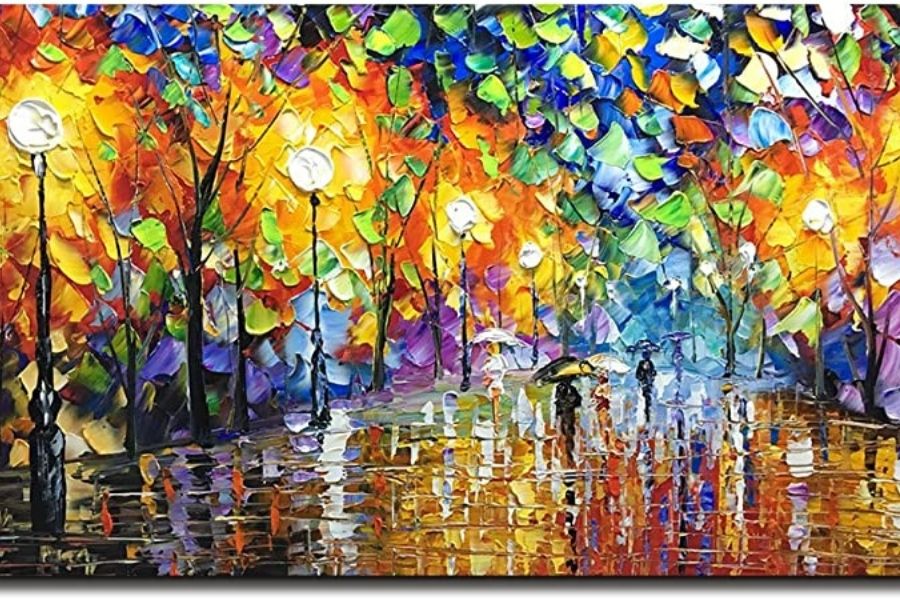
Cultural Shopping in Kenya: A Handcrafted Adventure Worth Packing an Extra Bag For
Curio Shops and Artisan Markets: Where Culture Meets Craft
Craft Villages & Coastal Handicraft Centers: Redefining the Beach Market
Old Town Mombasa & Fort Jesus Market – Where History Speaks in Silk and Sandalwood
Cultural Villages: Directly Supporting Women Artisans and Tribal Creators
Don’t Forget the Coffee and Tea – Aromatic, Organic, Unforgettable
Kenya’s Cottage Industry: Art, Design & Everyday Elegance
Contemporary Kenyan Fashion: Local Materials, Global Runways
◾ Adele Dejak fuses bold African design with European minimalism. Her accessories, belts, and handbags are handcrafted using upcycled brass, recycled cow horn, and Ankole bone.
Kenya’s Contemporary Art Scene: More Than Just Carvings
A Real Encounter at a Curio Shop – Carvings, Conversations & Craftsmanship
How to Choose & Negotiate at a Curio Shop in Kenya – Smart Traveler Tips
Frequently Asked Questions (FAQ)
Yes. We recommend shopping with a trusted guide or in organized centers. Blavals Safaris only partners with vetted artisans and cooperatives.
Definitely. Our custom itineraries allow flexibility for stops at craft centers, markets, or workshops.
Yes, but some items may require clearance (like ebony). We assist with permits and packaging.
In markets, yes—negotiation is part of the fun! In formal shops or cooperatives, prices are usually fixed.
Beaded jewelry, sisal baskets, kikoys, soapstone, hand-blown glass, Swahili decor, and eco-friendly fashion.
Let Blavals Curate Your Cultural Safari + Shopping Experience
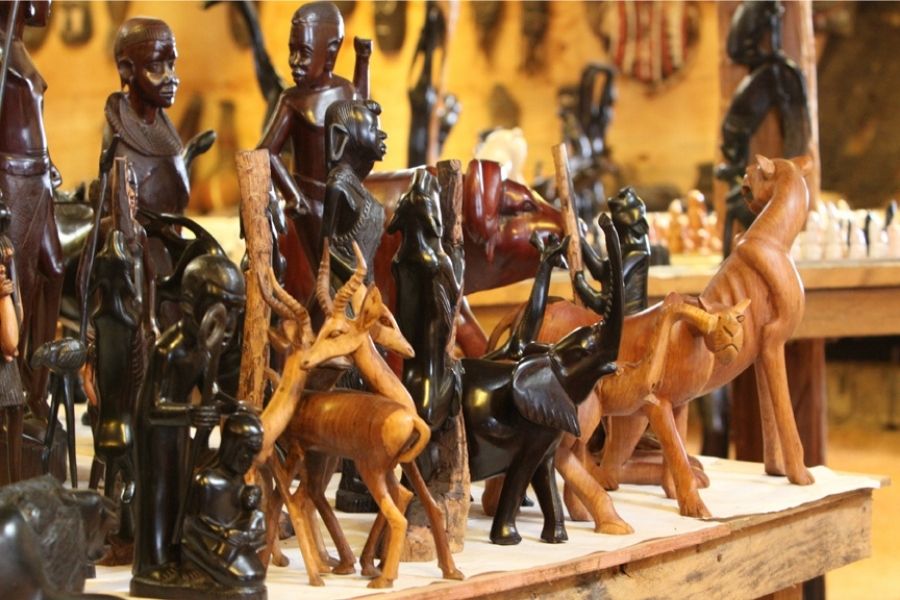
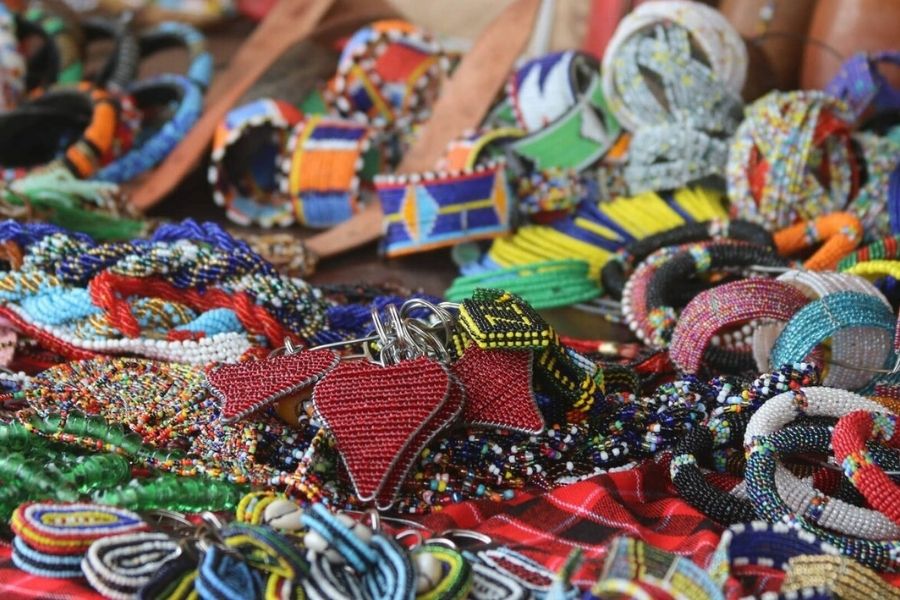
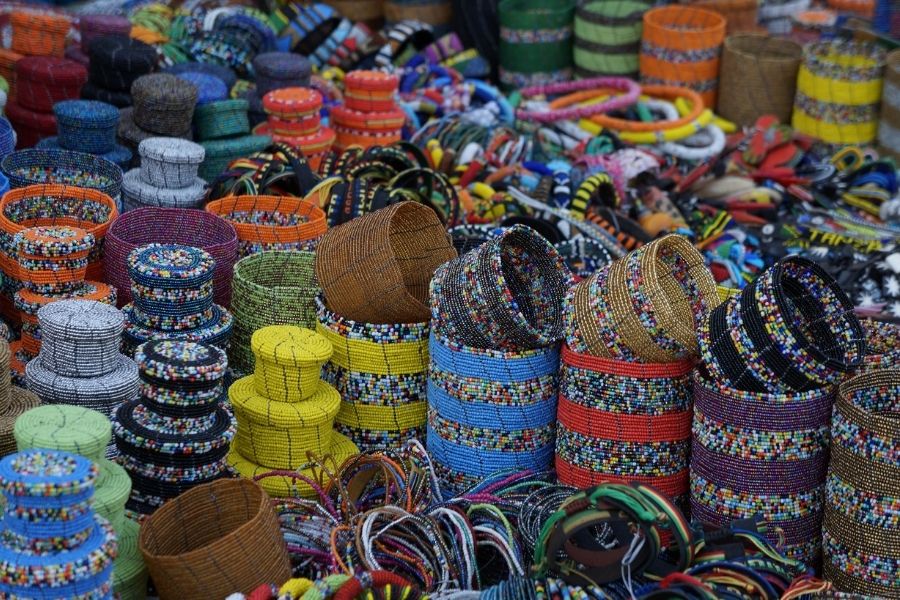
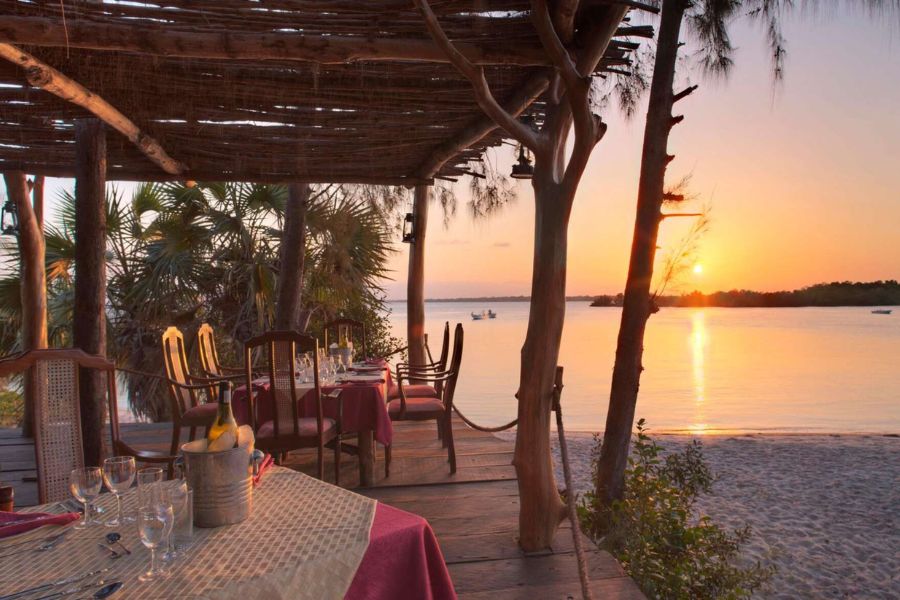
What You'll Find in This Guide.
My Journey to Lamu.
" There are no cars in Lamu. The narrow alleyways, the rhythmic calls to prayer, the scent of spices and saltwater—everything slows you down, pulls you into the present moment. It's the perfect antidote to our hyperconnected world.
Understanding the Lamu Archipelago.
The Islands
When to Visit:
Opulent Retreats: Luxury Escapes in Lamu.
The Red Pepper House.
The Majlis Resort
"Most guests think they'll explore the archipelago every day," Federico told me with a knowing smile, "but by day two, they're usually content to move between their suite, the beach, and the pool." He was right—The Majlis creates such a complete environment that it requires genuine effort to pull yourself away.
Peponi Hotel
Luxury Historic Beachfront Iconic Bar.
My Superior Room faced directly onto the seafront, with carved wooden furniture, crisp white linens, and fresh flowers replaced daily. While not as lavish as The Red Pepper House or as contemporary as The Majlis, Peponi offers something perhaps more valuable: authentic character.
Mid-Range Gems: Comfort Without Breaking the Bank
Kijani Hotel
We spent an hour grinding spices and discussing the subtleties of coconut milk extraction—the kind of unscripted experience that makes travel meaningful.
Msafini Hotel
What impressed me most about Msafini was the staff's practical knowledge. When I mentioned wanting to explore the less-visited southern beaches, Hussein at reception not only mapped out a perfect walking route but also calculated exactly when to leave based on the tidal patterns. "Go at 11," he insisted. "Not 10, not 12." Following his advice led me to completely empty stretches of pristine coastline.
Charming on a Budget: Classic Lamu Accommodations
Jannat House
Lamu Palace Hotel
Sunsail Hotel
Budget, Simple, Clean, Local Experience.
Beyond Your Hotel: Experiencing Lamu Like a Local
Dhow Sailing
Hidden Food Gems
Architectural Tours
Evening Walks
Flying to Lamu
|
Flight Details
|
Skyward AM
|
Jambo Jet
|
Safarilink PM
|
Skyward PM
|
|
Nairobi Airport
|
Wilson
|
JKIA
|
Wilson
|
Wilson
|
|
Departs Nairobi
|
10:00
|
09:00
|
13:30
|
14:30
|
|
Via
|
Mombasa
|
-
|
Direct
|
-
|
|
Arrives Lamu
|
12:10
|
10:20
|
15:15
|
16:20
|
Return Journey
|
Flight Details
|
Skyward AM
|
Jambo Jet
|
Safarilink PM
|
Skyward PM
|
|
Departs Lamu
|
12:30
|
10:50
|
15:30
|
16:40
|
|
Via
|
Mombasa - 12:10
|
-
|
Malindi
|
Malindi
|
|
Arrives Nairobi
|
14:40
|
12:10
|
17:50
|
18:30
|
|
Luggage Allowance
|
20kg
|
23kg
|
15kg
|
20kg
|
Airlines: Skyward Express, Safarilink, Jambo Jet- Frequency: Daily flights are available
Getting There & Around
Weather & When to Visit
Why Lamu Will Call You Back
- Experience the enchantment of the Maasai Village Tour.
- How to Book a Kenya Safari: Avoiding Scams and Reliable Operators
- How to Plan a Maasai Mara Safari: Step-by-Step Guide for First-Timers
- Inside Kenya’s Greatest Wildlife Spectacle: A Safari Lover’s Dream
- Kenya Coast Travel Guide: Best Beaches, Culture & Cuisine


